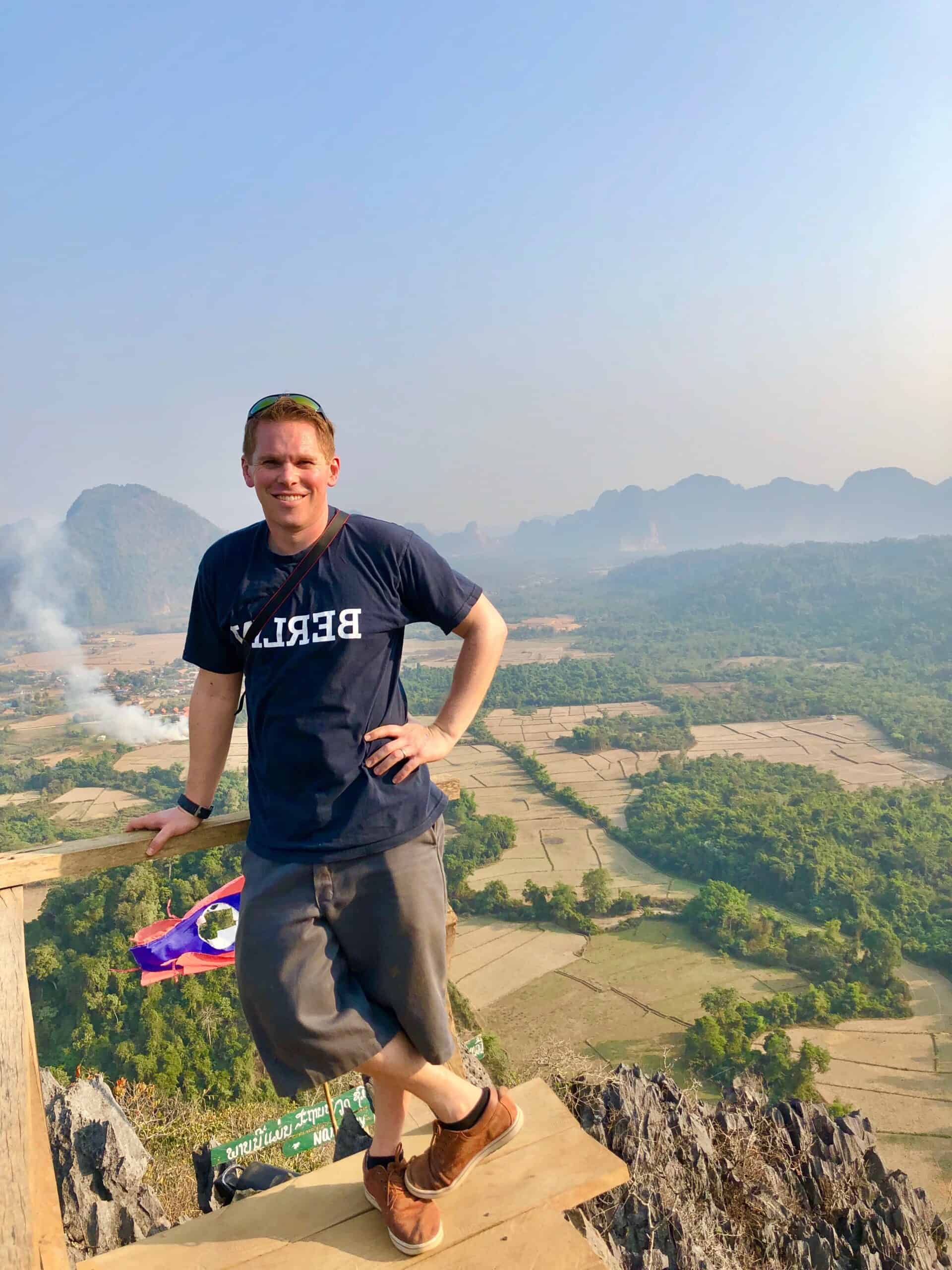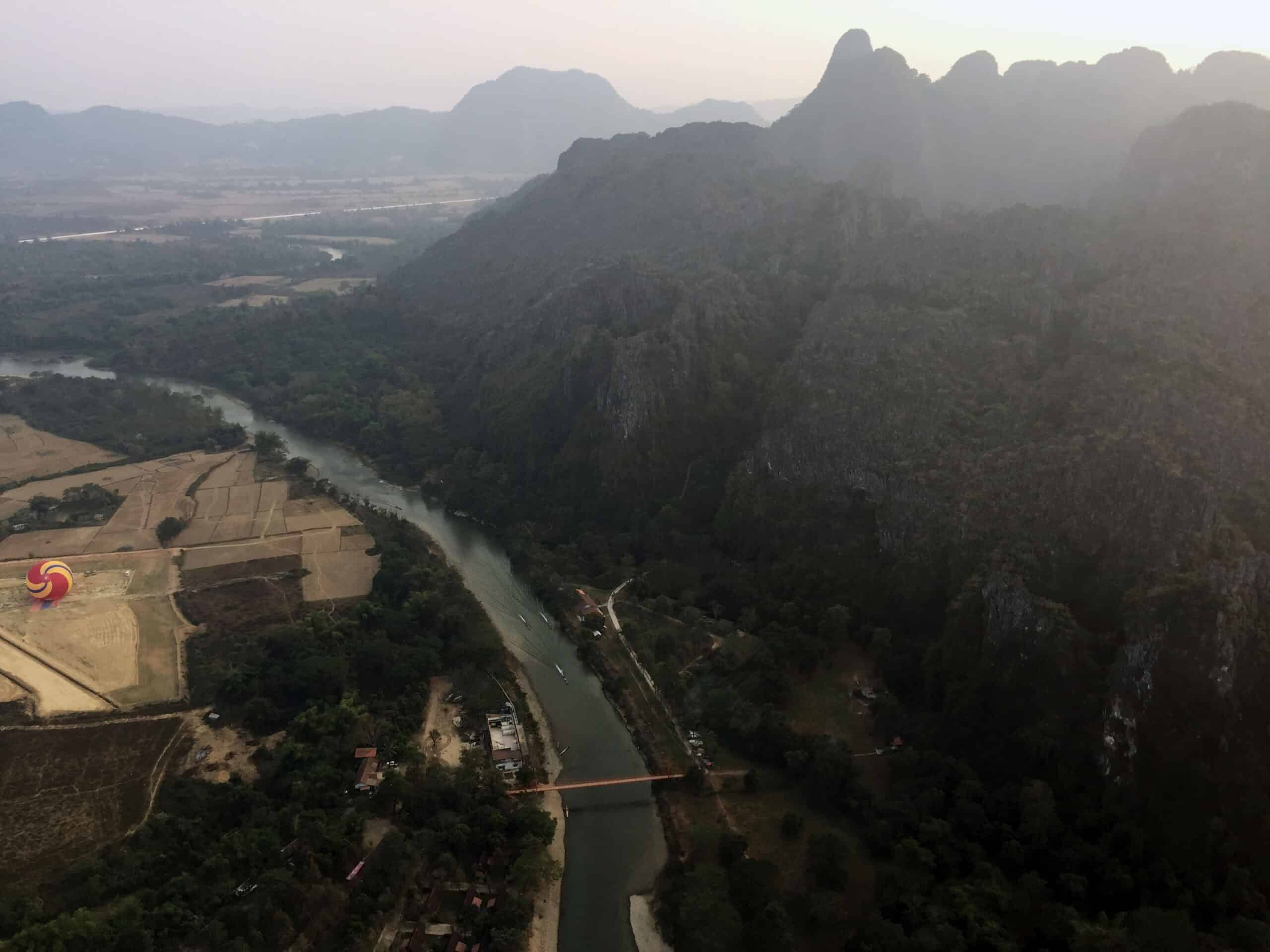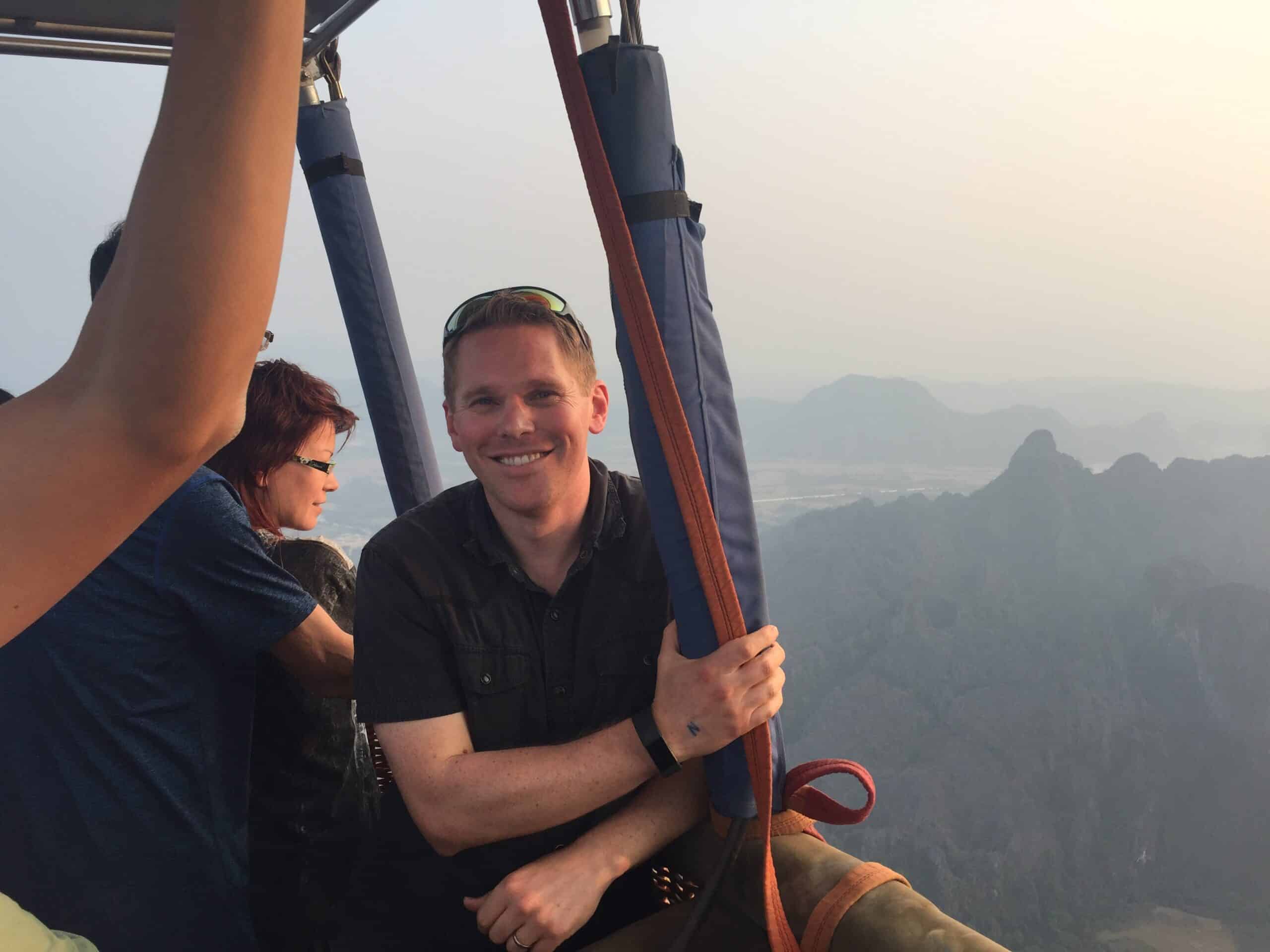
I was about 1,000 feet above the jungle when I started to panic.
Questions started racing through my head: why did I think this was safe? How does the pilot even steer this thing? Are there many hot air balloon accidents in Laos?
A few slow, deep breaths and taking a minute to enjoy the horizon, rather than looking straight down, and my panic subsided into a healthy kind of nervousness.
The past few days in Vang Vieng, Laos, I had been zip-lining, kayaking, and completed a hike that is best described as a scramble up a sheer cliff rather than a walk through the jungle.
But this hot air balloon ride takes the cake. This was the scariest thing I had ever done. And I am so glad I did it.
Table of Contents
Why Facing Your Fears Is Important
Everyone has fears. I don't care who you are. And every fear leads to a smaller, more limited life unless you take that fear head-on.
Every person has a critical decision to make when it comes to their fears: you can face them, or you can avoid them.
Of course, you want to avoid them.
But according to Psychology Today, avoiding your fears makes you more afraid.
You’re sending a subconscious message to your amygdala, the part of your brain that controls your fear, that you should be frightened.
The more you avoid facing a fear, the worse that fear gets. The worse it gets, the more it hangs over you like a ton of bricks.
These fears can eat away at your confidence and affect every area of your life.

Traveling is the perfect time to face your fears.
You’re already outside of your comfort zone a little bit and more flexible to new ideas and pushing your boundaries even further.
People are more likely to try new things when they're on vacation or in a new place.
If you intentionally want to push yourself outside your comfort in hopes of becoming a more well-rounded human being (recommended), I recommend a specific process.
How to Face Your Fears
There’s a very simple process to facing your fears that has helped me tremendously.
There are four steps to this and we’re going to walk through them together:
- Define your fears
- Mitigate the risks
- Repair the damage
- Evaluate the cost of inaction
After this process, you will likely discover that many things are actually a lot less scary than you thought.
This process was adapted from a TED talk by Tim Ferris; you can watch it below.
Note – this process only works if you write it all out, so grab a notebook and let's get started!
Step 1: Define Your Fears
Start with something you’re afraid of doing and list the exact things you’re scared will happen.
For example, let’s say you want to travel to Morocco, but you’re a little afraid.
You don’t have anyone to go with, you’re not sure about the food and water there, and you’re worried about missing too much work back at home.
Once you’ve discovered your “reasons” for not doing something, you’ve just uncovered the best excuses you tell yourself.
What you’re afraid of is feeling lonely in a faraway land, getting sick, and angering your boss.
These are all legitimate things to be afraid of, but what can you do to prevent these things from happening?

Step 2: Mitigate the Risk
Now that we’ve dug a little deeper into what you’re really afraid of, the second step is to write out how to reduce the chances of these things actually happening.
If you’re afraid of feeling lonely, you can search for friends of friends in your destination city on Facebook, see if there are any meetups on meetup.com, or just stay at popular backpacking hostels where you’re likely to meet people.
If you’re concerned about getting sick from the food and water, make sure you’re up to date on your vaccinations and take some water purification tablets with you when you travel.
As for angering your boss, that’s easy.
You can talk to him/her well before your trip and make sure they’re ok with it and put in extra hours before the trip to make sure you don’t fall behind.
If those things don’t work, maybe it’s time to consider a new job?
None of these things guarantee your fears won't come true, but this sends a signal to your brain that they're less likely to happen.

Step 3: Repair the Damage
The next step is to come up with ways to fix the situation if it happens despite your mitigation attempts.
To stick with our Morocco example, what are you going to do if you get lonely?
You could call a family member or a friend. Tell them beforehand that you might call, so they're likely to answer.
What would you do if you get sick?
Chances are it’d be food poisoning or some bacteria in the water and go away in a day or two.
Keeping a list of local hospitals and clinics and purchasing travel insurance before a trip, just in case, may give you peace of mind.
How about that boss you’re worried about?
I would say if you get in trouble for taking a vacation, it’s time to find a new job. But you could also make it up by working some extra hours to catch up when you get back.
The purpose of this step is to tell your brain that you can deal with these situations if they did happen.
If you have a good solution to all the things you're afraid of happening, they are not so scary at all.
Step 4: The Cost of Inaction
This is by far the most important step.
How would you feel about yourself if you didn’t face your fears and do the thing you wanted to do?
How would you feel today? In six months? A year? Five years?
For me, just the thought of shying away from a challenge was enough to shame me into buying a hot-air balloon ticket.
Would you be ok with not going on that Morrocco trip?
Wouldn’t a little part of you always feel ashamed you didn’t do it?
Could you live with the curiosity of wondering what could have been?
I can’t. Or at least, I won’t.

You might go through this process and decide you were right to be afraid. Some fears are well-founded…but most aren’t.
And you know that until you go through this process.
I am not encouraging you to do anything dangerous, just be realistic about what the dangers are.
By the way, hot air balloon crashes are actually rare and balloon rides are considered quite safe.
Final Thoughts
Having dinner with my wife after my terrifying hot air balloon ride, I wouldn’t shut up about it.
My wife rolled her eyes as I went on and on about every detail. I was glowing.
I still remind myself of what I did that day and why I did it. I didn’t take the balloon ride despite being scared; I did it because I was scared.
Months later, feeling very nervous before giving a presentation at work, I remembered looking down 1,000 ft into the jungle that day in Laos.
Suddenly, a room full of colleagues didn’t seem so terrifying.
Again, when it was time to interview for a better job, I remembered the hot air balloon ride and told myself “If I could do that, this interview is a piece of cake.”
Facing your fears will give you confidence that will permeate into other areas of your life and allow you to do things you would generally be hesitant to do or avoid altogether.
We’re not just talking about going on adventures here, we’re talking about living your best life. And you won’t find that life inside your comfort zone.
Seth Newton is an environmental chemist, world traveler, and avid
outdoor enthusiast. He writes about hiking, camping, and backpacking in
his popular outdoor blog OutMoreUSA.com.
Planning a trip? Go Backpacking recommends:
- G Adventures for small group tours.
- Hostelworld for booking hostels.
